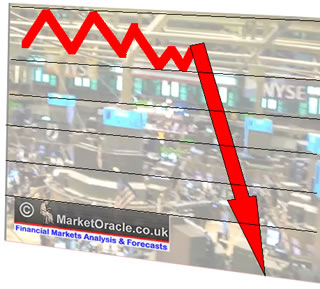In part 2, we are going to learn, "What are Options?" by using information from the Investopedia Staff.
An option is a contract that gives the buyer the right, but not the obligation, to buy or sell an underlying asset at a specific price on or before a certain date. An option, just like a stock or bond, is a security. It is also a binding contract with strictly defined terms and properties.
Still confused? The idea behind an option is present in many everyday situations. Say, for example, that you discover a house that you'd love to purchase. Unfortunately, you won't have the cash to buy it for another three months. You talk to the owner and negotiate a deal that gives you an option to buy the house in three months for a price of $200,000. The owner agrees, but for this option, you pay a price of $3,000.
Now, consider two theoretical situations that might arise:
This example demonstrates two very important points. First, when you buy an option, you have a right but not an obligation to do something. You can always let the expiration date go by, at which point the option becomes worthless. If this happens, you lose 100% of your investment, which is the money you used to pay for the option. Second, an option is merely a contract that deals with an underlying asset. For this reason, options are called derivatives, which means an option derives its value from something else. In our example, the house is the underlying asset. Most of the time, the underlying asset is a stock or an index.
Calls and Puts
The two types of options are calls and puts:
- A call gives the holder the right to buy an asset at a certain price within a specific period of time. Calls are similar to having a long position on a stock. Buyers of calls hope that the stock will increase substantially before the option expires.
- A put gives the holder the right to sell an asset at a certain price within a specific period of time. Puts are very similar to having a short position on a stock. Buyers of puts hope that the price of the stock will fall before the option expires.
Participants in the Options Market
There are four types of participants in options markets depending on the position they take:
- Buyers of calls
- Sellers of calls
- Buyers of puts
- Sellers of puts
People who buy options are called holders and those who sell options are called writers; furthermore, buyers are said to have long positions, and sellers are said to have short positions.
Here is the important distinction between buyers and sellers:
Here is the important distinction between buyers and sellers:
- Call holders and put holders (buyers) are not obligated to buy or sell. They have the choice to exercise their rights if they choose.
- Call writers and put writers (sellers), however, are obligated to buy or sell. This means that a seller may be required to make good on a promise to buy or sell.
Don't worry if this seems confusing - it is. For this reason we are going to look at options from the point of view of the buyer. Selling options is more complicated and can be even riskier. At this point, it is sufficient to understand that there are two sides of an options contract.
Tour of the Chicago Board Options Exchange (CBOE)
The Lingo
To trade options, you'll have to know the terminology associated with the options market.
The price at which an underlying stock can be purchased or sold is called the strike price. This is the price a stock price must go above (for calls) or go below (for puts) before a position can be exercised for a profit. All of this must occur before the expiration date.
An option that is traded on a national options exchange such as the Chicago Board Options Exchange (CBOE) is known as a listed option. These have fixed strike prices and expiration dates. Each listed option represents 100 shares of company stock (known as a contract).
For call options, the option is said to be in-the-money if the share price is above the strike price. A put option is in-the-money when the share price is below the strike price. The amount by which an option is in-the-money is referred to as intrinsic value.
The total cost (the price) of an option is called the premium. This price is determined by factors including the stock price, strike price, time remaining until expiration (time value) and volatility. Because of all these factors, determining the premium of an option is complicated and beyond the scope of this tutorial.
OK, let's take a test:
1. The two types of options are ___________ and __________.
2. _________ are similar to having a long position on a stock.
3. _________ are very similar to having a short position on a stock.
List four types of participants in options markets depending on the position they take;
4. __________
5. __________
6. __________
7. __________
People who buy options are called 8. _________ and those who sell options are called 9. ____________.
For call options, the option is said to be 10. ____________ if the share price is above the strike price.
All the answers are in this blog that you just read. It is easy to look up the answers.
If you got 0 or 1 wrong, you may want to look into the options trade if the risk is what you would like to take.
If you got 2 wrong, study up on this investment instrument.
If you got 3 wrong, look into using an Options Trader.
If you have 4 or more wrong, consider staying away from Options.





